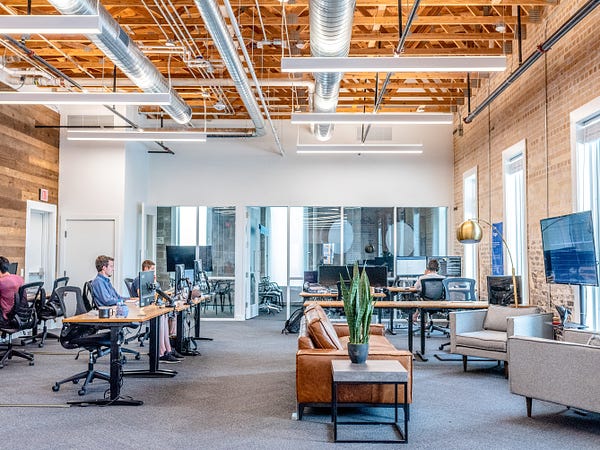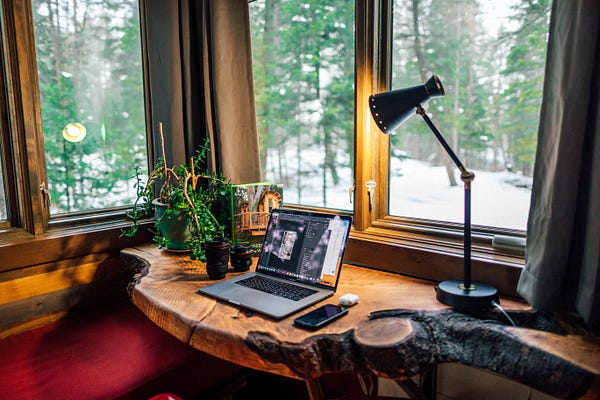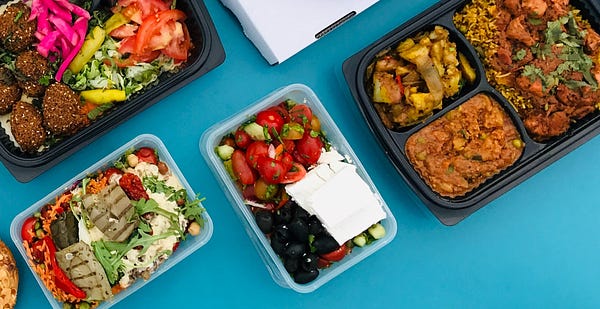Returning to the office post-COVID-19
May 22 • 6 min read
Most Australians have been living under a pandemic led lock-down over the past few months, and whilst that has had its ups and downs, it looks like restrictions might ease up and things could return to normal. However, the reality is that things are unlikely to go back to exactly the way they were, at least not in the near future. The transition to our ‘new normal’ might take months or even years to complete. In the meantime eating at restaurants, hanging out with friends and family, playing sports or going to the gym will be a different experience.

“Hampr is questioning the ‘old ways’ and coming up with ideas and innovations to simplify the transition back to the office”
‘Working from home’ has reshaped the norm
One thing that our team at Hampr pays particularly close attention to is the office environment. Although I can confidently say that the concept of the office won’t go away, I also believe that a post-covid office will not be the same as it used to be. As the pandemic eases its grip on society, employers are considering not only how to safely bring back employees, but whether every employee needs to come back to the office at all. Employers have pleasantly realised that some teams can maintain productivity and output whilst working from home.
The reaction of staff working from home has been mixed. Some people have enjoyed the experience, they feel happier, more productive and have more time on their hands, others; have felt the opposite — distracted, unmotivated and isolated. With the majority feeling somewhere in the middle. So we will likely see a variety of different appetites for the transition back to the office. One thing we probably can expect is a sharp rise in the number of formal work-from-home arrangements. The pandemic has also made society question the need for putting hundreds or thousands of people in a building at the same time. Going forward, many employers may ask a portion of their staff to work onsite on an as-needed basis.

The office will be different
Inside the office itself, social distancing will reshape floor and seating plans with offices only able to house a smaller fraction of numbers. The concept of hot-desking and an open office plan may also need to be re engineered to be pandemic-palatable. For example, hot-desking can lead to a lot of human traffic and open plans allow for plenty of free movement. Furthermore, bringing in guests to the office everyday might become a bit of a faux pas, at least for a few months as things ease up.
As most companies begin the transition back to the office by cycling teams through a week-on/week-off approach, we can probably expect to see increased safety measures implemented such as ‘temperature testing’, sanitiser stations and even policies to wear face masks. Employers will seek to reduce the number of surfaces that employees need to touch such as doors, lights and garbage bins.
Office catering and pantry
One noticeable difference at the office will be the way that people order and eat food — and yes, people will still have to eat. But it’s less likely that you will see shared platters of food and buffets and the way we manage fruit, milk, and other snacks will also be different. Individually packaged portions for meetings, training, workshops and seminars are a great way to get food into the office and minimise risks.
You can use the Hampr platform to easily find suppliers that are offering individually packaged servings of almost anything — from sandwiches and salads to fruit and snack and even breakfast boxes. The Hampr platform helps you send out a link so each person can select what they want to eat ahead of time.

It’s lunchtime
Employers are going to be conscious of what their staff are doing for lunch, not in an attempt to monitor the contents of their plates, but instead to help them avoid the health and hygiene risk of being in a crowded food court, elevator, or busy common area waiting in a queue. Another important factor to consider is that social distancing may lead to longer than normal wait times at the lifts, and not everyone will want to spend their lunch break waiting to go up and down the lifts to get a bite to eat.
To avoid these risks employers can provide individually packaged lunch for staff at the office, however this should be arranged with suppliers that deliver their own food, so as to not risk the staff health and hygiene by having food delivered by an unknown and unrelated third party. Giving staff the ability to order ahead of time also saves you the guesswork of who will be in the office — and can ensure that everyone gets fed.
To help make the transition back to the office, Hampr has built a solution that allows anyone at the office to put in their lunch order ahead of time. Lunch will arrive individually packaged and will include each staff member’s name on the box. All the meals will arrive together, straight from a quality kitchen to your office and delivered by the quality food suppliers themselves — and not a third party.
Hampr is one of the first in the world to offer this type of solution — and we’ve done all the legwork to make this as simple as possible. The solution has already been used by lots of companies across Australia — with great results!
A company is only as good as its people
An important thing for both employers and employees to recognise is that the concept of a company or organisation, its culture, its people and the work it does, will not go away. However one of the greatest challenges in a post pandemic world will be to maintain a company culture and its values across a workforce that is less likely to physically
interact as much as it used to. It will be difficult for employers to find unique value propositions to motivate and retain their employees. When you’re remotely executing work from a task list and are limited in your ability to interact with team members socially, a lot of companies begin to look the same.
But adversity is the mother of innovation, and we’re already seeing a groundswell of post-pandemic ideas relating to office and people management.
After all, a company is only as good as its people.

